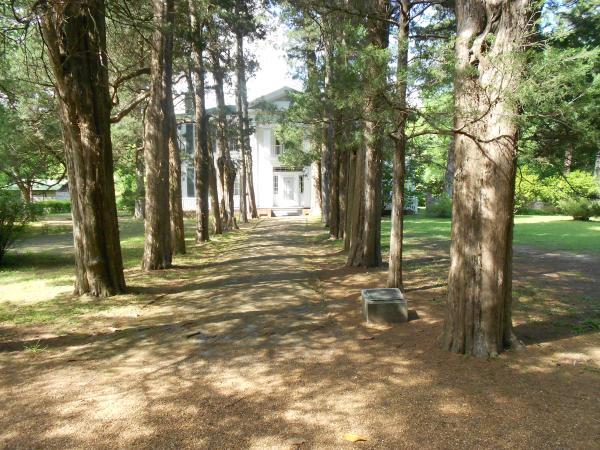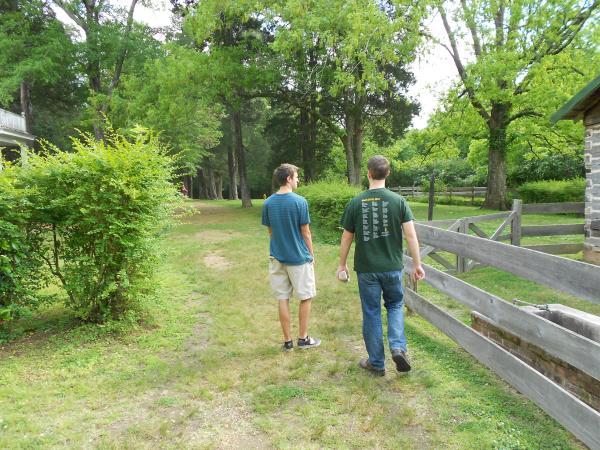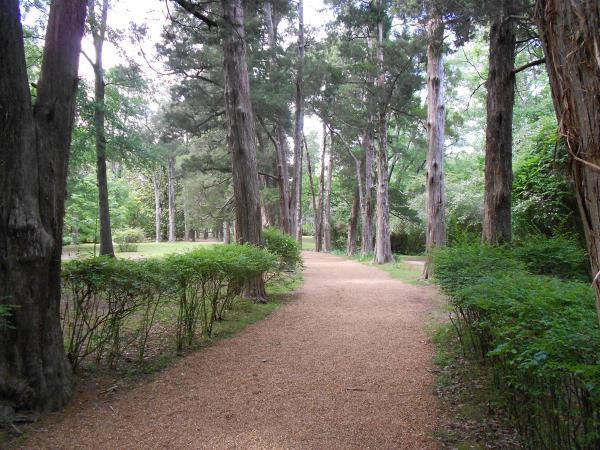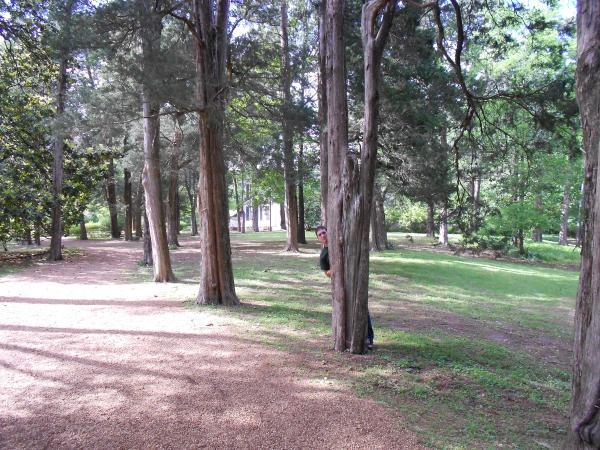The two day Battle of Shiloh, fought April 6-7, 1862, was the first really big, really bloody battle of the war between the states, fought largely by green soldiers who had not yet seen combat. Civil War historian Shelby Foote has called Shiloh a “disorganized, murderous fist fight”. The battle of Shiloh was fought by over 100,000 soldiers, with over 24,000 men killed, wounded or missing. It was a bloodbath, and it sent deep shock waves through the citizenry. It was a wake up call that this was going to be a terrible, terrible war.
For the second day of our adventure, Andrew had an inspired idea. He suggested we wake up early and jog the Shiloh battlefield at sunrise. We all agreed that was a great idea so we woke up early this morning and made our way to Shiloh.
Tennessee is pretty. Very pretty. But the place we’re staying at, Counce Tennessee, is home to a paper factory. Thankfully our hotel is outside of the blast zone, but driving within three blocks of the factory is like driving through a high pressure dome of smell. Unfortunately, we had to pass this olfactory hazard to make it to the Shiloh battlefield.
We arrived and parked at the still-active Shiloh Methodist church. Unfortunately I failed to photograph the original Shiloh church which is nearby. It is a log cabin (and as I found out later, just a replica) that was the scene of heavy fighting the first day of the battle, and gave the battle its name.
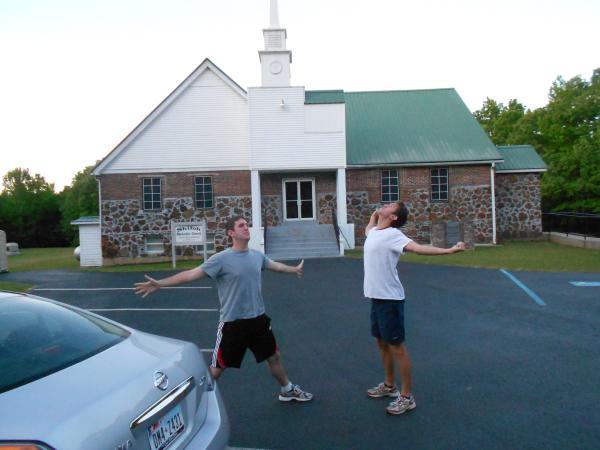
Andrew and Kenny, pretending to warm up
We set off at a jog from Shiloh church, stopping periodically to take in various monuments and points of interest.
We ran east of the church, along the Sunken Road and the Peach Orchard (currently being replanted, evidently), scenes of heavy fighting and critical resistance mounted by the Union against the strong Confederate attack on the first day of the battle. We turned northward and stopped at Bloody Pond. It is named thus because of the wounded of both sides who dragged themselves to the pond to slake their thirst with water which soon grew dark with the blood of the dead and dying.
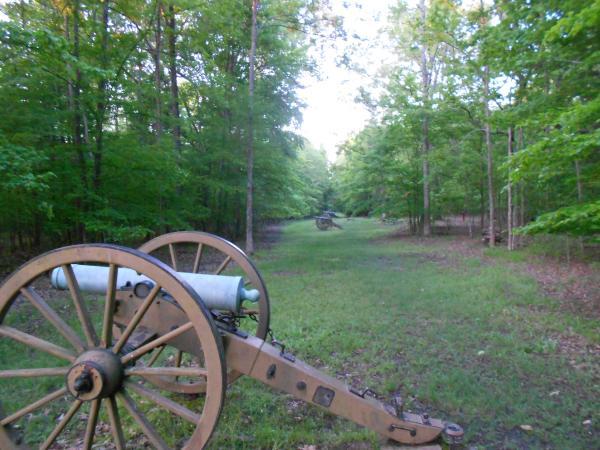
The Sunken Road
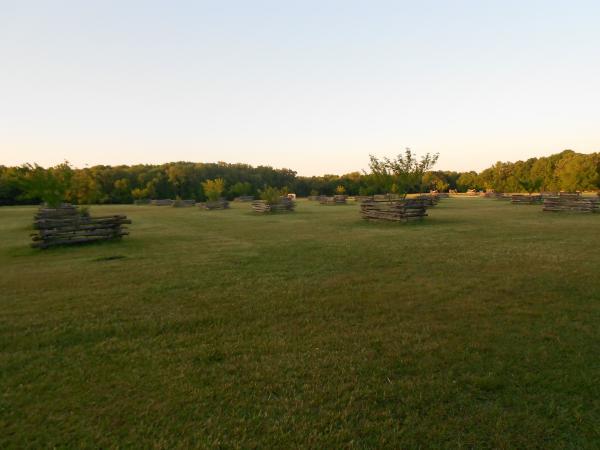
The Peach Orchard, currently being replanted
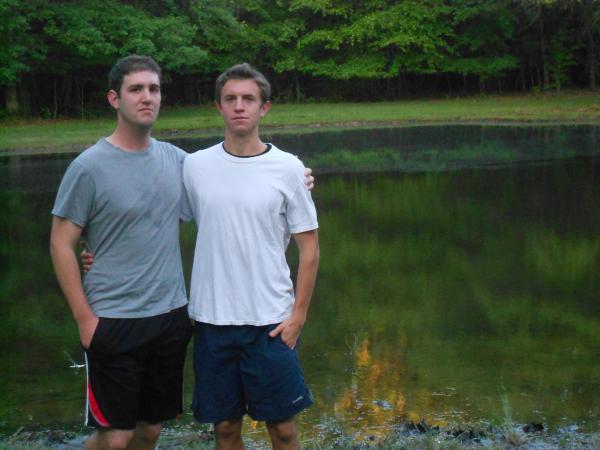
Andrew and Kenny at Bloody Pond
We ran toward the Visitors center, near Pittsburg Landing, where Buell’s reinforcements disembarked on the evening of the first day of battle, helping to turn the tide for the Union. We failed to find the landing (we didn’t have a map) so we turned around and ran back to Shiloh church. I estimate we ran about five miles all told.
We headed back to the hotel for breakfast, then showered and rested before getting some pizza and heading back to the battlefield.
We started at the Visitor’s Center this time, where Kenny and Andrew donned period uniforms and posed for pictures.
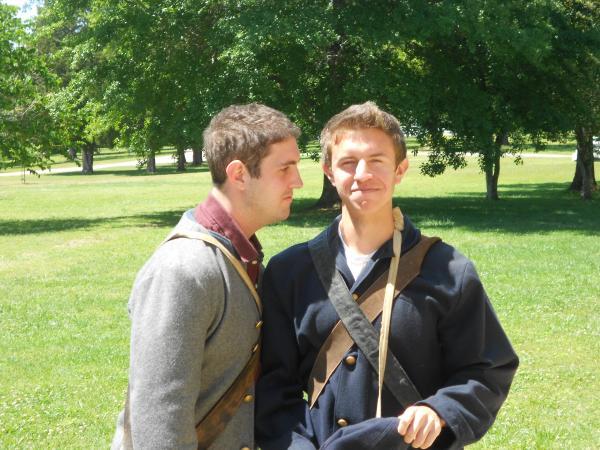
Andrew and Kenny – North versus South
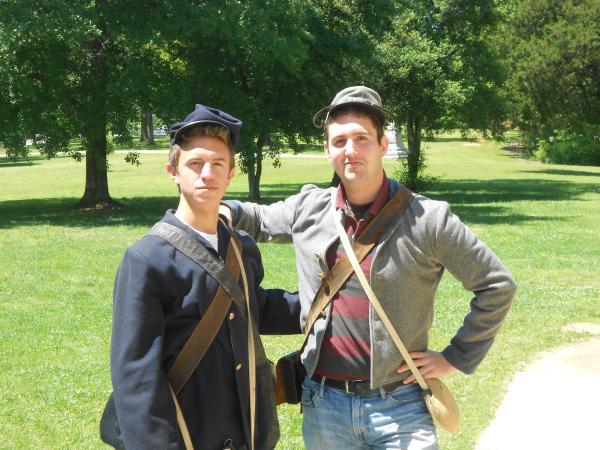
Reconciliation
Following this, we walked the battlefield for several more hours. Shiloh is an extraordinarily well-preserved battlefield, and smaller than some of the later battlefields we visited, and it is relatively easy to picture what happened.
There are 3,584 Union dead (of whom 2,357 are unknown) buried at the cemetery. Shiloh was an early battle, fought before the Union had its processes developed for dealing with casualties. With warm weather coming on, most of the dead from the battle were buried quickly; the Union soldiers were buried in individual graves and the Confederates were buried in trench-shaped mass graves. The Union soldiers were disinterred years later and laid to rest in Shiloh National Cemetery. It is disconcerting to note how many of the dead went unidentified.
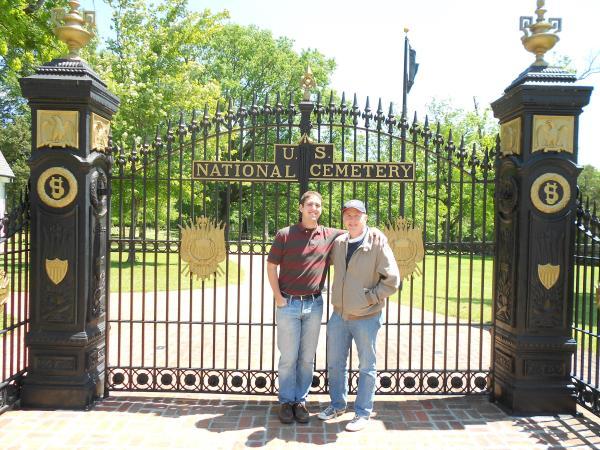
Me and Andrew, in front of Shiloh National Cemetery
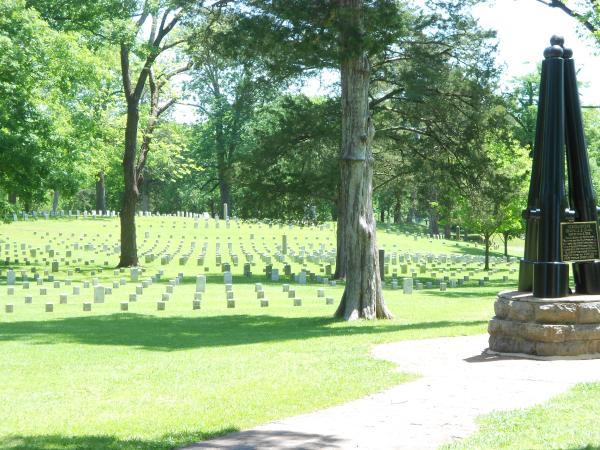
The graves at Shiloh. The short graves mark the unidentified, with just a number inscribed
We then walked to Pittsburg Landing on the Tennessee river. This is where reinforcements eventually arrived to bail General Grant out. It was really kind of foolish for Grant to deploy the Union army with its back to this river and creeks on its right and left flanks. The army was completely boxed in and narrowly avoided disaster when the Confederates attacked and pressed it to the river.
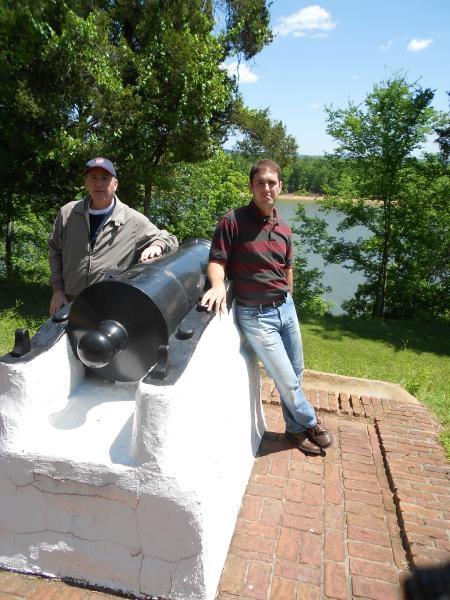
Above Pittsburg Landing
The commander of the Confederate army was Albert Sidney Johnston, a gallant and well-respected Southern general. He led the final charge against the Peach Orchard personally, and was mortally wounded in that charge, having received a bullet behind his left knee which severed an artery. He could have been easily saved, but he had sent his personal doctor to go tend the wounded of both his own army and also the wounded among the captured union soldiers. There was no one around him who realized that he needed a tourniquet until it was too late. We stood quietly at the site of his passing, in a ravine some distance from where he was wounded. None of us had much to say.

General Albert Sidney Johnston was mortally wounded here
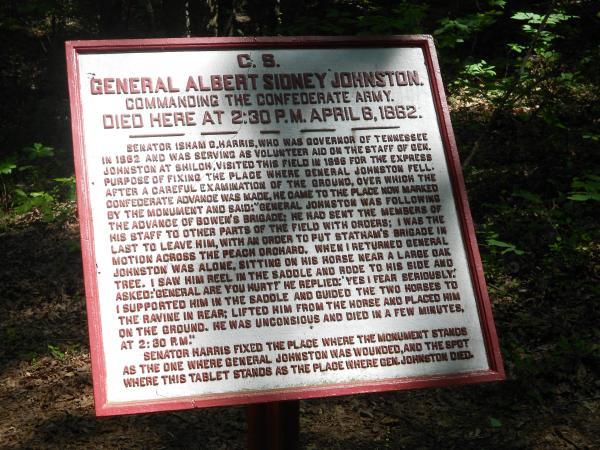
He died in this ravine, about fifty yards away
Shiloh was one of the first battles where places of terrible carnage received names that would live on, names like “Bloody Pond” and “The Hornet’s Nest”, We paused for a moment at the Hornets Nest, a tangled thicket and the site of some truly awful combat.
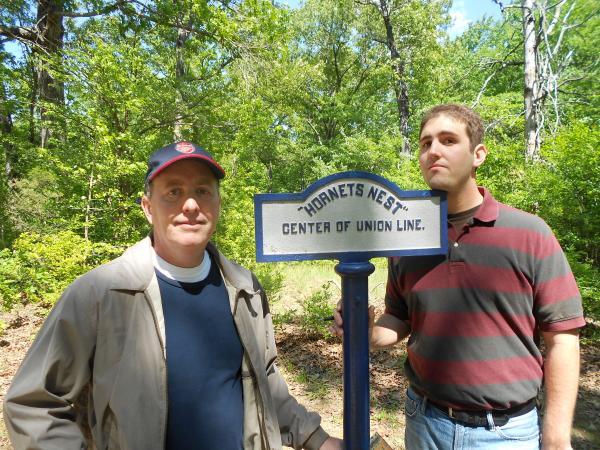
At the Hornet’s Nest
Like all Civil War National Parks, the grounds are dotted with monuments to the various units that fought in the battle, with the monuments set on the field of battle where the units were known to be engaged.
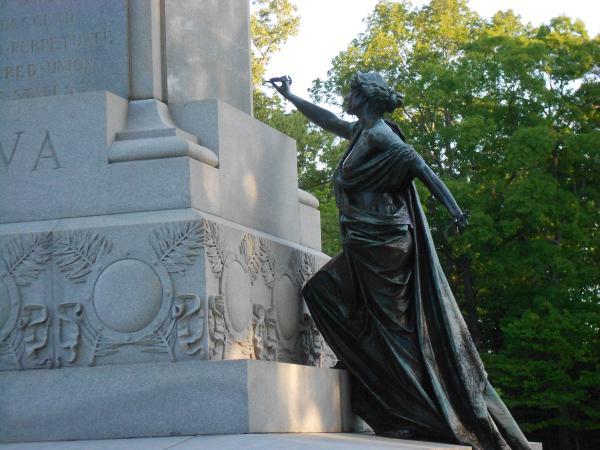
Monument to the soldiers of Iowa

Monument to the soldiers of Wisconsin
Here is one of the five known burial trenches containing Confederate dead.
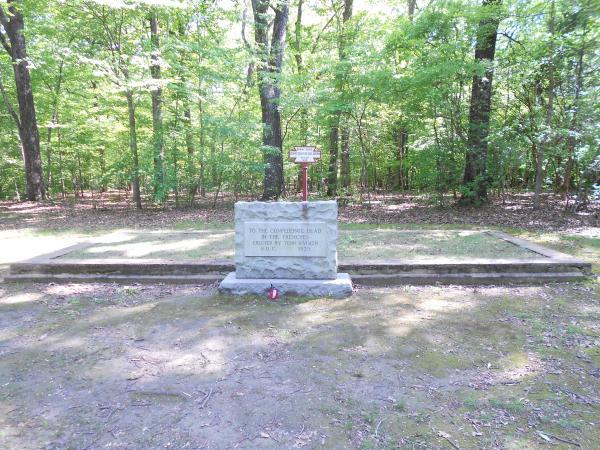
One of five known Confederate burial trenches
Shiloh was a Union victory, but just barely. It is said that on the night of April 6th, after that first terrible day of fighting, General William Tecumseh Sherman located Ulysses S. Grant and said “Well, Grant, we’ve had the devil’s own day, haven’t we?”
In typical fashion, Grant replied, “Yes. Lick ’em tomorrow, though.”
And he did.
We left Shiloh around 4:30pm and drove to Franklin, Tennessee. We ate dinner at the Bunganut Pig, which is an English-style pub. Jill had worked things out so that our longtime friend Nellie, who first introduced me to Jill way back in the day, could join us for dinner. Andrew, Kenny and I arrived early and snacked on potato wedges until Nellie showed up. When she did show up, I got up excitedly to give her a hug, accidentally sending my large, full glass of ice-water flying. Nellie got a kick out of that. I live to amuse.
It was great reminiscing with Nellie about our days in Glorieta, NM, and all that has happened since.
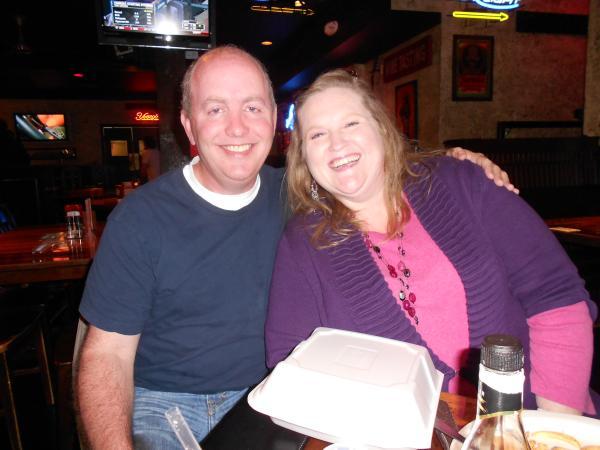
Reunion with my good friend, Nellie
Following our meal, we said our goodbyes and drove to Murfreesboro, the site of the Stone’s River battleground, which we’ll visit tomorrow.

